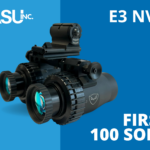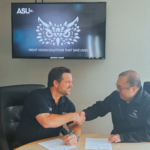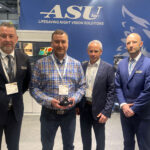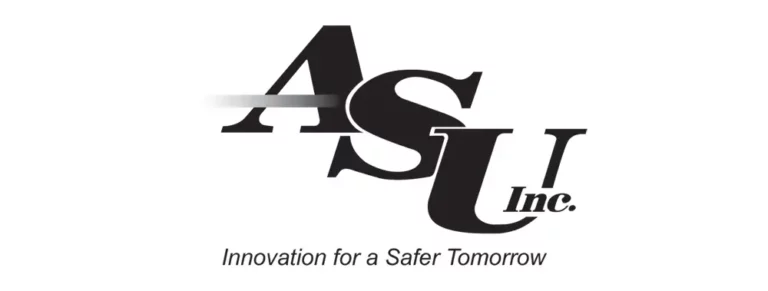by Matt Thurber
Night-vision goggles (NVG) are rapidly becoming a mainstream tool in many helicopter operations as the devices continue to come down in price. March 4, 2013, 2:50 AM Night-vision goggles (NVG) are rapidly becoming a mainstream tool in many helicopter operations, to the extent that NVG pilot training is available at many more schools, more avionics and electronic equipment is out-of-the box NVG-compatible and prices of goggles are one of the few aviation items that has dropped in price, below the rate of inflation.
Goggles are made by the two major manufacturers–ITT Exelis and L-3–and still cost at least $10,000, but the likelihood that new pilots entering the rotorcraft profession will be wearing the devices is higher than ever.
“I hate flying at night without them,” said Christian Gadbois, owner of SRT Helicopters (Booth No. 5722), a flight training company in Bakersfield, Calif. In addition to initial and advanced pilot training, SRT specializes in mountain and desert flying as well as external sling load and vertical reference training, disaster response, technical rescue and water/tactical operations and various types of commercial helicopter services. The company’s Bell JetRanger is NVG-compatible, and SRT’s Schweizer 300C will soon be equipped for NVG training.
Most EMS providers are using NVGs, Gadbois said, as are parapublic operators and many airborne law enforcement agencies. While SRT can teach new pilots how to fly with NVG, he said, it doesn’t necessarily make sense. “It’s a pretty hefty expense to go through as a low-time pilot,” he said. “They probably won’t see goggles for some time.” Pilots typically learn how to fly with goggles after going to work for an operator that uses the technology. “Most of the people we train for goggles are for high-risk operational type stuff,” he added, such as “mountain flying, over the desert at night and overwater search-and-rescue.”
While prices have dropped, NVGs aren’t inexpensive, and there is also the cost of converting the helicopter. The cockpit conversion to make SRT’s Schweizer 300 NVG-compatible cost $30,000, according to Gadbois. “Everything in there has to be converted.” There is also the expense of mandatory 180-day inspections of the NVGs. And pilots must remain current, too, in order to fly with NVG and for commercial operations, to carry passengers.
Although SRT isn’t aiming to use the 300 for primary NVG training, it will be useful as a lower-cost alternative to the JetRanger, especially for brownout and whiteout training and recurrent training for SRT’s own pilots and instructors.
Equipment Providers
ITT Exelis for many years was the sole manufacturer of the sophisticated night-vision tubes used in NVG. (Sister company ITT Enidine, a manufacturer of vibration absorbers, is exhibiting at Booth No. N3204). Some NVG manufacturers use Exelis tubes, while Exelis also manufactures its own NVG, the popular AN/AVS-9 series, which are distributed by Transaero (Booth No. C6615).
The other major NVG tube manufacturer is L-3 (Booth No. C5901). Heli-Expo exhibitor HelicopterHelmet.com (Booth No. C2903) sells NVG by L-3 and also offers helmet solutions for those NVG products.
NVGs work by taking in whatever light is available and amplifying it many times, according to Nick Bobay, ITT Exelis v-p and general manager for night-vision systems. “Something you couldn’t see with the human eyes,” he said, “the tube can detect those photons and turn those into electrons and into a picture.”
NVG do have limitations. SRT’s Gadbois explained that pilots need to learn how to avoid flying into IMC while wearing goggles. “If you haven’t been trained properly on what to look for,” he said, “you can get into weather you probably wouldn’t have got into [without NVG].” The problem is that with NVG, it is possible to see through some forms of clouds, so the pilot might not notice that conditions have deteriorated. “If you see wisps, you’re probably in the clouds,” he said. “If you’re new to goggles, you don’t catch that right away.”
The newer Generation 3 NVG tubes automatically correct for the amount of light received, according to Bobay. Older-generation tubes will bloom with a bright halo around a bright light source like a streetlight, he explained. “They won’t overwhelm your eyes and won’t blind you. We designed the new technology to prevent that. Basically, it auto-corrects for the amount of light. Haloing doesn’t happen so [the user] can continue to see the images they want to see. It filters that extra light out.”
Modifiers and STCs
Companies like Aero Dynamix, Aviation Specialties Unlimited, Night Flight Concepts and others offer night-vision lighting modifications to make helicopters NVG-compatible. These systems, which include interior and exterior lighting, are installed under FAA supplemental type certificates (STCs) and must be tested and maintained on a regular basis.
Aero Dynamix, Euless, Texas (Booth No. C2025)
“We are swamped,” said Mike Guinn, director of sales and marketing for Aero Dynamix, which has its own light lab for testing night-vision systems. While many avionics manufacturers are building NVG-compatible lighting into their products, Aero Dynamix still has to modify some products to meet the certification standards. “Just because it’s compatible at the component level,” he said, “doesn’t mean that it passes in the aircraft.” Aero Dynamix has agreements with helicopter manufacturers, and most new ships delivered with NVG-compatibility use Aero Dynamix modifications, according to Guinn.
Aero Dynamix sells the L-3 and ITT Exelis NVG and also provides the 180-day goggle testing. “Once you put on a pair of goggles, you’ll never fly without goggles again,” he said.
Aviation Specialties Unlimited, Boise, Idaho (Booth No. C2707)
Aviation Specialties president Mike Atwood started the company in 1995, and since then Aviation Specialties has developed into a full-service NVG modification, maintenance and training provider.
The company’s first NVGSTC was issued in 2001, and now it has about 25 STCs covering 60 helicopter and fixed-wing aircraft. “We’ve done over 700 aircraft,” Atwood said. Now business, which is booming, is moving from the U.S. market to many other countries. “We’ve established night-vision programs in New Zealand, Ireland, Norway and Canada,” he said.
A typical Bell JetRanger NVG package with STC, goggles and pilot training costs about $60,000, according to Atwood. Even though many new avionics come with NVG-compatibility, he still recommends consulting with his company before embarking on an STC package. Not only is this important in terms of making sure all the avionics and instruments are NVG-compatible, but the system must be field maintainable, too, he emphasized.
Atwood has noticed that many NVG-trained helicopter pilots transitioning to civilian jobs “won’t take a job because the operator hasn’t established a goggle program,” he said. “It’s a technology that is available, so why not utilize the technology? It has limitations like anything else, but as long as you stay within the parameters and limitations, you can run a safe operation. NVG is the most cost-effective way of increasing situational awareness for pilots and operational safety for night operations.”
Night Flight Concepts, Bedford, Texas (Booth No. C2103)
NVG-modification and maintenance provider Night Flight Concepts was launched in 2006 by former Army aviators. “All of our operations were conducted at nighttime under NVG,” said company president Adam Aldous. “So we became subject matter experts in our particular fields. And we looked at, how do we give back to the community, what can we do with the knowledge and experience we have?”
According to Aldous, about 65 to 70 percent of law enforcement and EMS helicopters in the U.S. are using NVG systems. “We expect that market saturation will be about 80 percent by the end of next year or the beginning of 2014.” Night Flight Concepts is now expanding into serving emerging NVG markets in Canada, Europe, Mexico, South America, South Africa and India.
Night Flight Concepts not only modifies helicopters for NVG but also helps train pilots and mechanics and operators to develop risk-management programs and standard operating procedures for operating with NVG. Night Flight Concepts makes sure the NVG chosen by the operator are compatible with the lighting system in the helicopter. A conformity inspection is done for the certification process, then regular inspections are required to assure that the goggles still work properly with the lighting system.
“It doesn’t matter if they’re flying corporate, offshore, oil, law enforcement, EMS or ENG, if you’re flying at nighttime, period, it’s much safer if done correctly with the right equipment and trained properly to be utilizing NVG,” he said. “Night vision goggles are simply there to make nighttime flying safer by being able to see obstacles, terrain and other hazards that they typically would not be able to see.”
Night Flight Concepts, Universal Helicopters (Booth No. C1211) and Embry-Riddle Aeronautical University (Booth No. C1111) and Dodge City Community College have formed a training alliance to offer NVG training in the Southwest U.S. The program will be based at the Universal Helicopters center of excellence, which is located at Embry-Riddle’s facility in Prescott, Ariz.
http://www.ainonline.com/aviation-news/hai-convention-news/2013-03-04/nvg-essential-tool-helo-pilots





